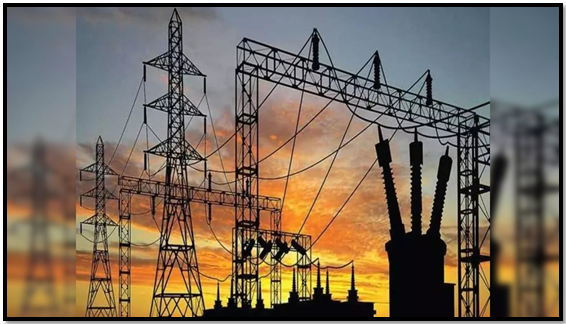“OVERHEATING ELECTRICITY: ADDRESSING INDIA’S POWER DEMAND CRISIS”
Syllabus:
- GS-3- Increasing heat wave, demand for more energy and tackling the energy demand
Focus :
- The article focuses on India’s urgent need to address the rising electricity demand due to extreme temperatures. It highlights the challenges of balancing renewable energy growth with traditional thermal power, regulatory issues, financial constraints, and the necessity for comprehensive reforms to ensure stable, affordable, and sustainable electricity supply.
Source - ET
Introduction
- Record temperatures across India have led to a surge in electricity
- The Government of India (GoI) has directed idle power plants to ramp up operations.
- Despite high demand, power generators are not receiving adequate prices, leading to shortages.
Historical Context of Electricity Supply
- 2011-2016:
- Energy shortfall was 8.5%, and peak shortfall was 9.8%.
- By 2015-16, shortfalls reduced to 2.1% and 3.2% respectively, mainly due to thermal capacity additions.
- Solar power accounted for 2%, wind for 9%, and hydropower for 14% of installed capacity.
- 2016-2023:
- Thermal capacity additions dropped to 24%.
- Solar capacity rose to 54% and wind to 14%, while hydropower added less than 4%.
- Solar capacity increased from 2% in 2016 to 16% in 2023, wind power from 9% to a little over 10%.
Impact of Renewable Energy (RE)
- The shift towards renewable energy (RE) has impacted supply stability.
- Peak shortfall increased to 4% in 2023 from 0.8% in 2018-19.
- Solar and wind energy growth was driven by strong state support, fiscal benefits, and payment-protection mechanisms.
Government Measure
- Promoting large coal-fired capacities despite climate concerns.
- Encouraging RE bundled with battery storage to meet demand profiles.
- Battery storage is expensive and does not generate electricity, requiring fiscal and financial support for large-scale adoption.
Demand-Side Challenges
- Utilities charge consumers less than the cost of service.
- Regulatory scrutiny is often inadequate, and tariff hikes are not implemented to recover higher power purchase bills.
- Gas-fired plants, contributing 6% of installed capacity, struggle due to limited domestic gas supply and expensive imports.
- State-level regulatory play supports low tariffs, discouraging the purchase of expensive electricity.
Regulatory and Financial Issues
- Disputes over fuel prices andnormative pricing set by the central regulator lead to dissatisfaction among producers.
- Poor mapping of real-time demand and purchase contracts results in resource wastage.
- GoI has pushed utilities to settle their ₹1.35 lakh crore dues to generation companies by threatening to cut off interstate transmission system access.
- Supporting utilities’ investments in supply loss reduction and metering to improve revenue collections.
Need for State Regulatory Reforms
- State regulators often fall prey to political capture, necessitating reforms.
- Efficient resource adequacy planning is essential, especially given the rising impact of climate change.
- Higher tariffs to address peaking shortages should be socialized to recognize the true cost of intermittent supplies.
Conclusion
- The electricity supply crisis in India requires a balanced approach involving both renewable and thermal energy.
- Addressing regulatory and financial challenges is crucial to ensure a stable and affordable electricity supply.
- Effective planning and reforms at the state regulatory level are imperative to mitigate the impact of climate change and ensure energy security.
Additional Measures for Improvement
- Enhance Grid Management:
- Implement advanced grid management techniques to handle the variability of renewable energy sources.
- Invest in smart grid technologies to improve real-time monitoring and control of electricity distribution.
- Incentivize Private Sector Investment:
- Create policies that incentivize private sector investment in both renewable and conventional power generation.
- Provide financial incentives and guarantees to attract investments in battery storage and other balancing technologies.
- Strengthen Policy Framework:
- Develop a robust policy framework that supports the integration of renewable energy while maintaining grid
- Ensure that policies are adaptable to changing market conditions and technological advancements.
- Public Awareness and Participation:
- Educate the public on the importance of energy conservation and efficient usage.
- Promote demand response programs where consumers are incentivized to reduce or shift their electricity usage during peak periods.
- By addressing these areas, India can better manage its electricity demand, reduce shortages, and move towards a more resilient and sustainable energy future.
Source:The Hindu
Associated article:
https://universalinstitutions.com/ntpcs-renewable-energy-surge-targeting-60000-mw-by-fy32/
Mains Practice Question :
GS-3
“With record temperatures increasing electricity demand in India, discuss the challenges faced by the power sector in balancing renewable energy growth with traditional thermal power. Critically analyze the regulatory and financial constraints, and suggest comprehensive reforms needed to ensure a stable, affordable, and sustainable electricity supply.” (250 words)




